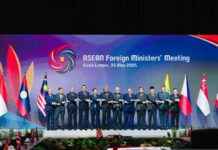Why Are Peci, Songkok, and Kopiah Popular in Indonesia?
In Indonesia, traditional headwear like Peci, Songkok, and Kopiah have been gaining popularity among men in recent years. But what exactly is the reason behind this trend? Let’s dive into the history and significance of these iconic accessories.
The Rise of Peci in Indonesia
Peci, a traditional Indonesian cap, has become increasingly popular among Indonesian men due to the accessibility of materials used to make them. No longer restricted to formal attire worn by officials, Peci saw a surge in popularity in the 19th century, coinciding with Indonesia’s fight for independence.
The Symbol of National Identity
One of the main reasons behind Peci’s popularity is its role as a symbol of national identity. More than just a head covering, Peci represents the spirit of unity and nationalism in Indonesia. Since Soekarno’s endorsement in 1921, Peci has been seen as a symbol of resistance against colonialism and the quest for independence.
Historical Influences and Independence Figures
The rich history of Peci in Indonesia, especially its association with independence figures like Soekarno, Ki Hajar Dewantara, and Tjipto Mangoenkusumo, has contributed to its popularity. When these prominent figures wore Peci, it sent a powerful message to the Indonesian people about the significance of Peci in the struggle for independence.
Versatility in Usage
Another reason for Peci’s popularity is its versatility. Unlike some other head coverings that are limited to formal occasions, Peci can be worn in a variety of settings. This makes it a practical and comfortable choice for Indonesian men, further adding to its appeal.
Representation of Religion and Culture
While Peci no longer exclusively represents a specific religion, many Muslim men still wear it, especially those associated with pesantren or religious institutions. For them, Peci is a symbol of their religious and cultural identity, adding to the diverse meanings attached to this iconic headwear in Indonesia.
This surge in popularity of traditional Indonesian headwear reflects a deeper connection to national identity, history, and culture among Indonesian men. The versatility and symbolism of Peci, Songkok, and Kopiah have made them more than just fashion accessories—they are symbols of pride and heritage for many individuals in Indonesia.






















